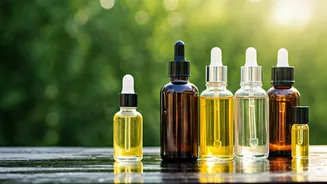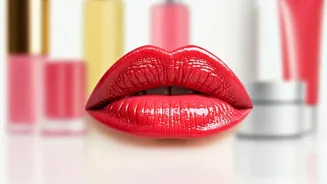Understanding Winter's Impact
Winter's harsh environment dramatically impacts skin, leading to dryness and irritation. The cold, dry air and indoor heating can significantly reduce
the skin's moisture levels, causing it to become flaky and itchy. This environment impairs the skin's natural barrier function, making it more sensitive to irritants. Exfoliation, a crucial part of skin care, becomes a delicate balance. It involves removing dead skin cells to reveal fresh, healthy skin, but over-exfoliating can worsen dryness and sensitivity. Therefore, understanding how winter affects the skin is the first step toward effective and safe exfoliation during these months. Proper care ensures skin remains healthy, hydrated, and capable of enduring the challenges of winter weather.
Gentle Exfoliation Methods
Choosing the right exfoliation method is crucial, especially in winter. Chemical exfoliants, like AHAs (alpha-hydroxy acids) and BHAs (beta-hydroxy acids), offer a gentle approach. AHAs, found in products like glycolic and lactic acid, loosen the bonds between dead skin cells, promoting cell turnover and enhancing skin's natural glow. BHAs, such as salicylic acid, penetrate deeper into pores to dissolve oil and debris, beneficial for those prone to breakouts. Physical exfoliants, which include scrubs and exfoliating tools, should be used with caution to avoid irritation. Scrubs with fine, rounded particles are preferable to harsh ones. Exfoliating tools, such as soft cloths or gentle brushes, can also be effective. Always test a small area first to assess your skin's reaction, starting with once or twice a week, and adjusting as needed. This approach reduces the risk of over-exfoliation and preserves your skin's natural moisture barrier.
Frequency and Technique
Adjusting the frequency and technique of exfoliation is vital during winter. Over-exfoliating can damage the skin's protective barrier, leading to increased dryness, redness, and sensitivity. Generally, exfoliating once or twice a week is sufficient. If you use chemical exfoliants, follow the product instructions carefully, starting with a lower concentration and gradually increasing as your skin tolerates it. For physical exfoliants, use gentle circular motions, avoiding excessive pressure. After exfoliating, thoroughly rinse the skin with lukewarm water, as hot water can strip away essential oils. It is also important to pay close attention to how your skin responds to exfoliation. Reduce the frequency or stop exfoliating if you experience any irritation, such as increased redness, flakiness, or a burning sensation. Listen to your skin and adjust your routine accordingly to prevent adverse effects.
Hydration is Key
Post-exfoliation hydration is critical to combat winter dryness. Immediately after exfoliating, apply a hydrating serum or moisturizer to replenish lost moisture. Serums containing hyaluronic acid can attract and retain moisture, while moisturizers with ceramides and emollients help repair the skin barrier. Look for moisturizers with ingredients like shea butter, glycerin, and natural oils like jojoba or argan oil. Apply moisturizer to damp skin to lock in hydration. Throughout the day, reapply moisturizer as needed, particularly after washing your face or spending time outdoors. Also, consider using a humidifier at home to increase the ambient humidity, which helps prevent skin dryness. Drinking plenty of water is equally important for maintaining internal hydration, supporting overall skin health from within.
Ingredients to Avoid
Selecting the right products also means knowing what to avoid during winter. Harsh ingredients in skincare products can exacerbate dryness and irritation, especially after exfoliation. Stay away from products with alcohol, fragrances, and sulfates, as they can strip the skin of its natural oils. Alcohol-based toners and astringents can be particularly drying. Fragrances, both natural and synthetic, can cause sensitivity and irritation. Sulfates, commonly found in cleansers, can strip away essential oils. If you use physical exfoliants, select those with finely milled particles. Consider patch testing any new products before widespread application to assess skin reactions. Focus on products that are gentle, hydrating, and barrier-supporting to maintain healthy, comfortable skin during the colder months.













